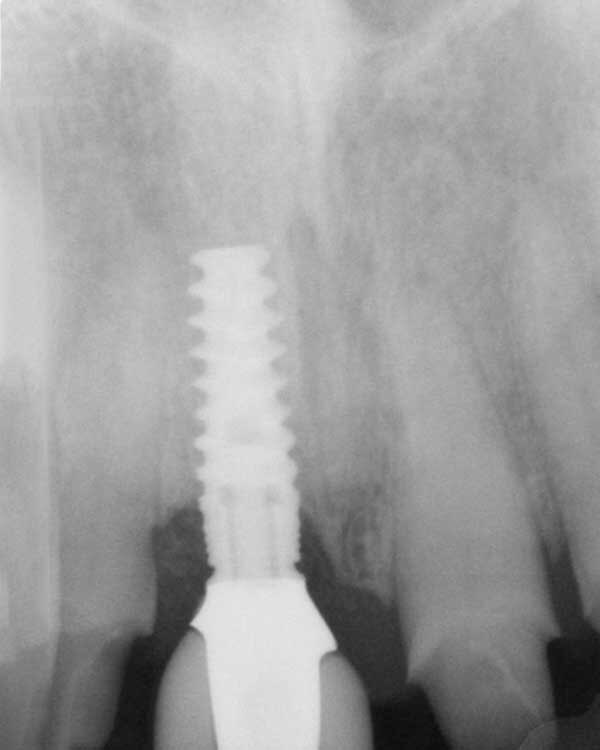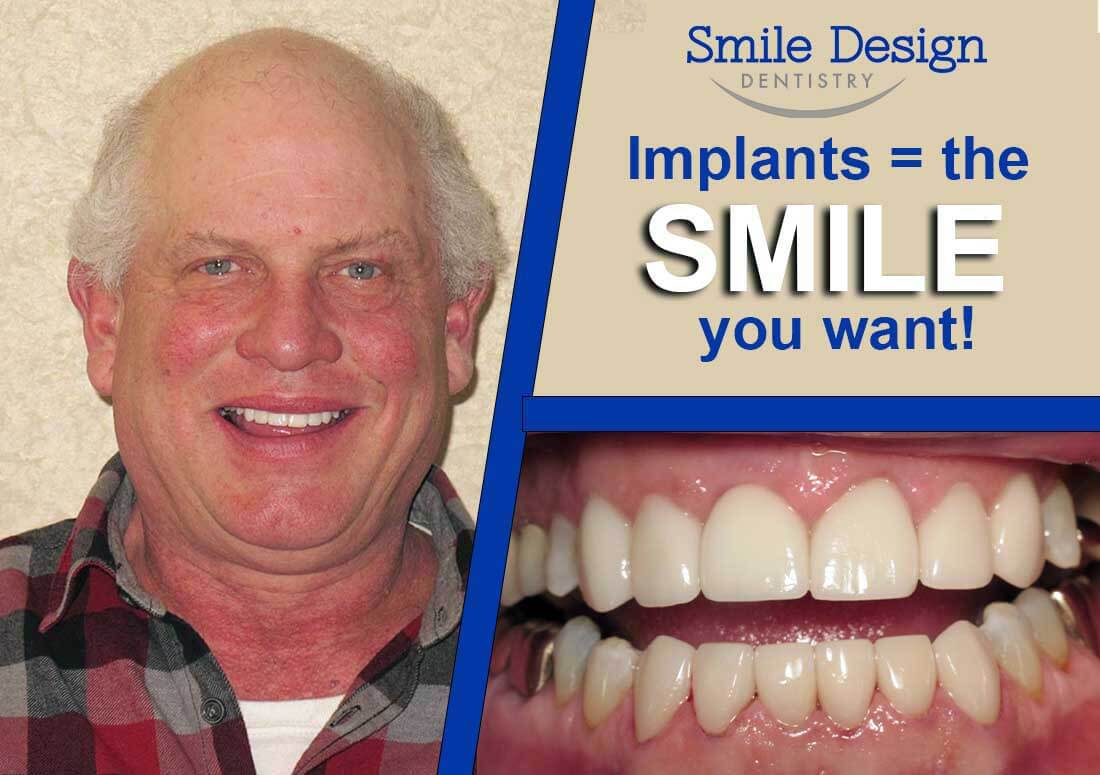Value and Cost of Implants: What You should Know
If you are reading this article you probably have heard of dental implants and are seeking greater knowledge about them.
This article provides a few insights into what a dental implant is and the costs that are involved. For the purpose of this article, we will focus on single tooth replacement.
What is a dental implant? A dental implant is a procedure done by a dentist that is intended to replace either a single missing tooth or multiple teeth. A dental implant is a screw, usually made from titanium that is placed in your jawbone and covered with a crown that looks and functions like your natural teeth.
Years ago a dental bridge was the standard of care to replace a missing tooth. It consisted of placing a crown on the teeth adjacent to the area where the missing tooth was and placing a false tooth between that was connected to them. This created a “bridge” of teeth over the missing tooth area.
Dental bridges are fine and function quite well but dentists have always been hesitant to take away natural tooth structure from healthy teeth. Placing a bridge may dictate that some of this healthy tooth structure be removed next to the missing tooth and dentists traditionally try to perform minimally invasive procedures. This tooth structure removal is one of the biggest disadvantages of a traditional bridge.
It is from this minimally invasive philosophy that dental implants were introduced, and have become more the standard of care that dentists use when replacing missing teeth. A dentist does not need to touch or take away any natural structure from the teeth next to it. This is one reason that dental implant surgery may be a more desirable treatment option to replace missing teeth.
You may be thinking that it sounds like a great treatment option for replacing missing teeth but can one actually afford it? To help answer this we can walk through the treatment steps of a modern dental implant and the costs that are associated with it to give you an idea of what you may be looking at financially.
First a dentist will need to do an examination and will order necessary x-rays. They may also order a special x-ray called a CT scan. This is a 3D x-ray that allows the dentist to look at the area needing the implant from all angles. A dentist wants to see the condition of the teeth next to the implant and to check on the bone level in the jaw where the implant is to be placed.
Since we tend to lose jaw bone through atrophy in the area of a missing tooth the dentist needs to determine that there is enough natural jaw bone left to support an implant for a successful procedure to be done. The dentist can also evaluate anatomical areas such as where the sinus cavity or nerve canal is in order to perform your procedure safely.
From this information a dentist can begin to create a treatment plan for the implant with associated costs. Below are the costs associated with a diagnosis for a single implant.
If multiple implants are needed there may be additional X-ray and CT x-ray costs.
Exam $60-$100
Single X-Ray $35-$40
CT (3D) X-Ray $300-$375
As I discussed above the dentist uses the information from the x-rays and exam to make a dental treatment plan that will show what needs to be done and the costs involved. Since there are many variables that will impact the final cost of an implant procedure, I will try to list them to give you an idea of implant expenses.
First the cost of the implant itself. If you remember the implant is a titanium screw that will go directly into your jaw bone.
Implant Costs for a Simple Procedure:
Implant $2100-2500
Depending on the particular considerations of your implant site and mouth, there are costs that may or may not need to be done in addition to the implant. If the dentist determines that there is not enough natural jawbone to support an implant they may recommend to do bone grafting.
This is placing cadaveric bone into the jaw where the implant is to be placed. The body uses this bone to provide a scaffold for adequate bone bulk in the jaw to place the implant. There is a wide cost variance here because the cost is dependent on how much cadaveric bone needs to be added to the site.
Implant Cost When Bone Grafting is Needed:
Bone Graft $500-2000
The other variable cost that may play a factor is if the dentist sees that the implant site is very close to the sinus cavity. In these cases, a sinus lift may need to be performed to lift the sinus up from the implant site to avoid the risk of having the implant perforate the sinus cavity.
Implant Cost When a Sinus Lift is Needed:
Sinus Lift $2400-3000
The process of getting an implant actually takes several months. This is because when an implant is placed it will take 3-4 months for the implant site to heal and for the jawbone to permanently bond to your titanium implant screw. During the 3-4 months after placing the implant, a healing cap is placed over your implant to protect it until it is ready for the implant crown.
Your dentist will have you back in the office a couple of times over this 3- 4 month period to check the site and make sure the healing is progressing as expected. So, at this point, we have discussed the initial diagnosis and placement of your implant, when the dentist has determined that the implant has bonded to the jawbone you will begin restoring the implant.
This means you will return to your dentist for the final abutment and crown to be placed over the implant. The crown will look and function just like your natural teeth. Only a dentist will know that it is not natural. For the crown to attach to the implant, the crown will need an abutment. A dental abutment is the link between the implant in your bone and the final crown that will look and function like your tooth.
The abutment can be either stock or custom, and made from a variety of materials: titanium, gold or zirconia are common ones. The implant crown is typically porcelain fused to metal or all porcelain. These are the costs associated with the final implant crown and abutment.
Implants Cost More When an Abutment is Needed:
Abutment $700-1100
Implant Crown $ 1500-2000
As you can see there are many variables that can affect the cost of an implant. It is for this reason that if you call an office to try and get an idea of costs it will be recommended that you come in for a consultation. That way you can see the options available and make an informed decision on your dental care.
To back track and tie this together there are basically 3 steps in the implant process done over 3-6 months:
Implant Costs:
Diagnostic $395-515
Implant Placement $2100-7500 (upper end includes bone graft and sinus lift)
Final Implant Crown and Abutment $ 2200-3100
Most implants will fall on the lower spectrum of the cost variance but I felt it important to try and discuss other variables that could greatly affect final costs. You may be wondering if insurance will cover dental implants. Like most insurance questions the answer is maybe.
It all depends on the coverage your employer has agreed to in the contract with the insurance company. What I have seen so far is that perhaps 50% of insurance plans will offer some form of benefit. If you ask your dental office, I’m sure they would be happy to call your insurance carrier to find out if there are benefits available for dental implants.
Consider the Value of a Dental Implant
Since implants can be a significant investment you may also be wondering about payment plans. This will be dependent on the dental office. Payment options offered will vary from office to office but at my practice, we have payment options that can extend up to 5 years depending on credit history.
It is also important to remember that the implant process happens over an extended period of time and costs are spread over that time period. A portion of your cost will be when the diagnostics and implant placement happens and the remainder is 3-6 months later when the implant is restored.
“The advancements made with dental implants over the last 25 years may arguably be the most impactful addition to dentistry. They allow us to treat our patients more conservatively and to provide a long-lasting tooth replacement option. The upfront costs are generally higher but the lifetime costs in many cases will be much less. What’s more is that when done by a highly skilled dentist, implants can also function as a cosmetic dental treatment plan and provide the smile you always wanted.”- Dr. Corey Jensen
Summary
As is the case with most dental care early treatment can help you to avoid ending up with a dental emergency and implants are a wonderful treatment option. and If taken care of properly dental implants can last for decades. So while it is an investment, it is an investment that will pay dividends for many years. Dr. Moore and Dr. Jensen have many years of experience in working with implants and are very happy with the results. Hopefully, this helps a little as you start your decision process on whether dental implants are a treatment option that you may want to consider.
Your next step would be to schedule a consultation with a dentist who can advise for you in detail if an implant may be a good choice for your dental care!
To restore your smile and get the look you want, call 763-537-1238.
 Brian Denn is the Clinic Manager at Smile Design Dentistry in Plymouth, Minnesota. Brian has over 25 years of dental practice management involving making practices run smoother and patient experiences better. He also leads a dental practice managers group staying abreast of the latest dental practice management trends.
Brian Denn is the Clinic Manager at Smile Design Dentistry in Plymouth, Minnesota. Brian has over 25 years of dental practice management involving making practices run smoother and patient experiences better. He also leads a dental practice managers group staying abreast of the latest dental practice management trends.





